「D-Egg: a Dual PMT Optical Module for IceCube」Journal of Instrumentation (JINST)(Issued on Apr.11,2023)
DOI: 10.1088/1748-0221/18/04/P04014
In July 2019, there was a formal call from the primary research group at IceCube and the National Science Foundation (NSF) for plans to upgrade the IceCube observatory. Construction of the IceCube Upgrade is planned to begin in around 2022, when approximately 700 new types of photodetectors will be deployed in the central region of the current detector array and alongside numerous calibration devices. One of those new detector types is called D-Egg, and it was developed by the Neutrino Astronomy Division here at ICEHAP.
This is one of two upgrades planned for IceCube, with IceCube-Gen2 planned to begin construction in 2026. When construction is complete, the IceCube's effective detection volume will be approximately eight times larger, making it capable of detecting more neutrino and identifying their cosmic origin.
Learn more about IceCube Upgrade and IceCube-Gen2 here.
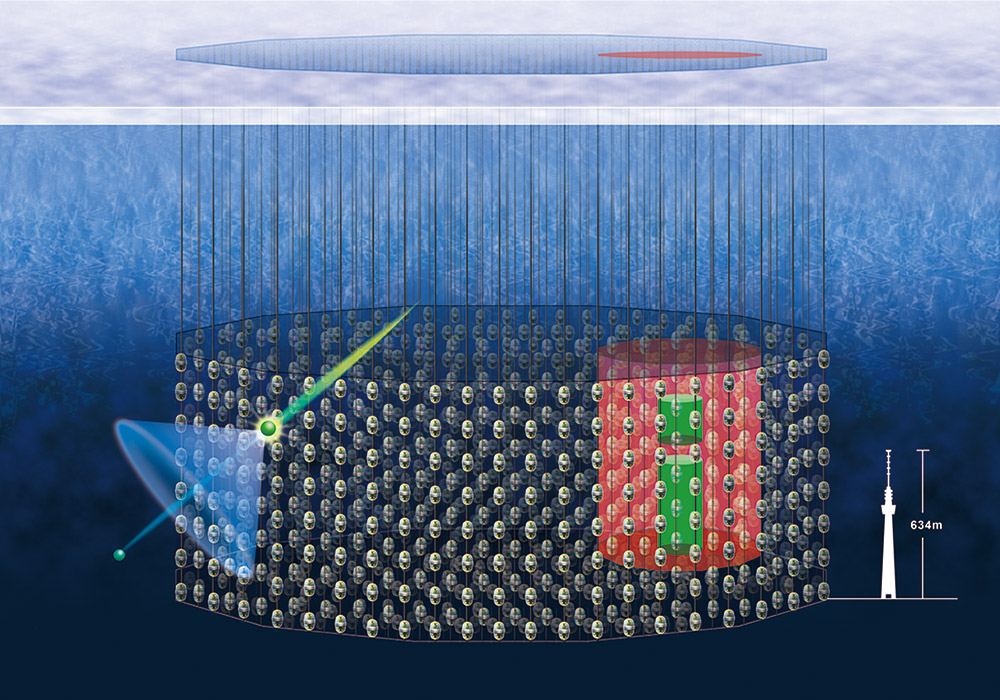 Artistic rendering of D-Egg installed in the South Pole ice as part of Gen2 ©SATO, Akiko
Artistic rendering of D-Egg installed in the South Pole ice as part of Gen2 ©SATO, Akiko
“In the autumn of 2013, there was an IceCube project meeting held in Munich, Germany. Prof. Ishihara who was sitting next to me, suddenly turned to me. Then showed me something she’d scribbled on a piece of paper.
‘I think this kind of detector would be good,’ she said.
She’d drawn a tall, egg-like device, and inside were two photomultiplier tubes, one facing up, one facing down. That was the first time I came across the concept for D-Egg.”
An excerpt from Discovering Deep Space Neutrinos – Emissaries from immense engines in the universe by Shigeru Yoshida, Kobunsha.
There are two defining features of the new photodetector D-Egg developed by the Chiba University group: Its egg-like shape (the name comes from) and the housing of two PMTs (upward-facing and downward-facing). Its slimmer shape than DOM contributes to lower the enormous drilling costs for burying detectors in the ice. The drilling costs are estimated to be reduced by approximately 20%.
The D-Egg also takes advantage of the other innovative Japanese technologies.
Let us take a look at them one-by-one.
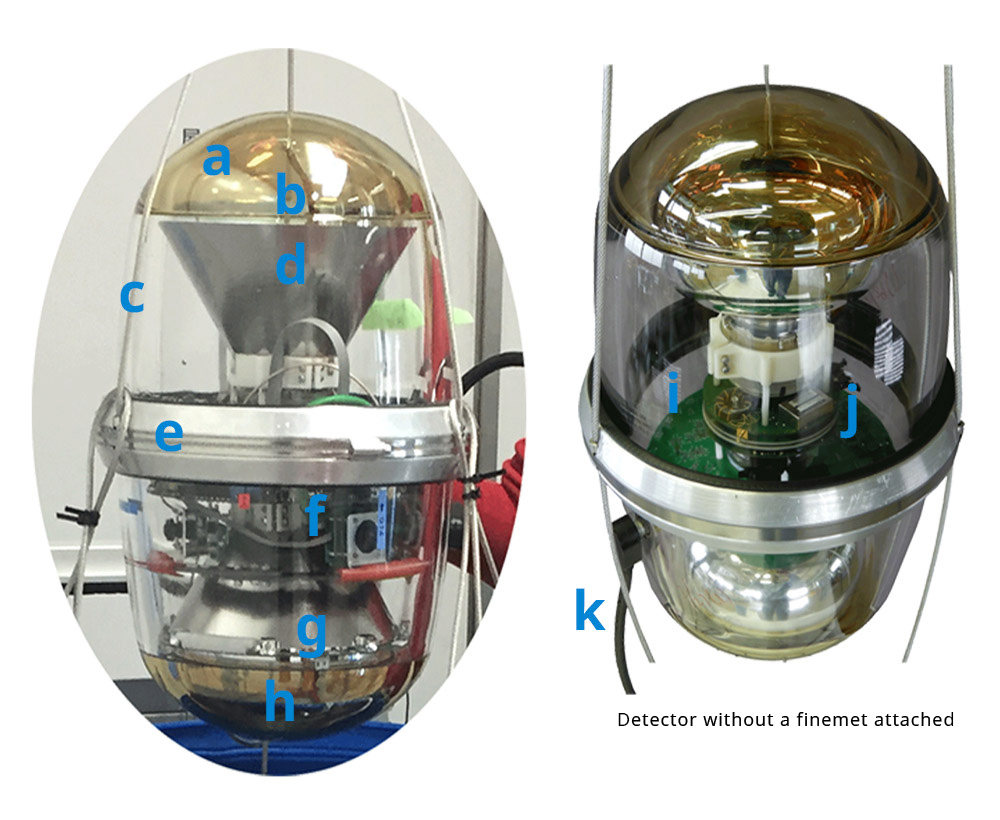
| a | A layer of gel is poured between the glass and the PMT. It helps the PMT to absorb the Cherenkov light by suppressing refraction and reflection of light. The gel also plays a role in fixing the PMT to the glass since it hardens over time. |
|---|---|
| b | Hamamatsu Photonics High-Performance PMT (upward-facing) The upward-facing high-performance PMT is made by Hamamatsu Photonics, a company in Shizuoka prefecture. Sensitivity to the photons from different directions is much higher than that of the DOMs currently in use. |
| c | The glass housing can withstand ice pressures of over 400 atmospheres. Fabricated by Okamoto Glass, in Kashiwa, Chiba Prefecture. |
| d | Magnetic Shield The PMT is partially surrounded by a thin high permeability plate to prevent any external magnetic fields from affecting the instrument. |
| e | Harness for connecting the detector to the wires it will hang from. The harness expands and contracts as the glass deforms with pressure and temperature changes under the ice |
| f | Camera System To take photos of the water refreezing process of the ice hole and observe the formation of bubbles. |
| g | Flashers Twelve LEDs are installed on a ring-shaped circuit board. They are expected to contribute to measuring the surrounding ice properties. |
| h | Hamamatsu Photonics High-Performance PMT (downward-facing) The downward-facing PMT mainly focuses on the detection of the neutrinos passing through the Earth. |
| i | Mainboard (data collection & control) Digitalizes the signals coming from the PMTs and sends them to the ICL using the main cable. |
| j | High-voltage divider circuit Applies a high voltage to convert a tiny photo-electron signals detected into an electronic signal processable by standard analog circuits. |
| k | Main cable The black thick cable attached to the side of the detector is connected to the observatory facility on the ice surface. It supplies electricity and communicates with the surface facility. |
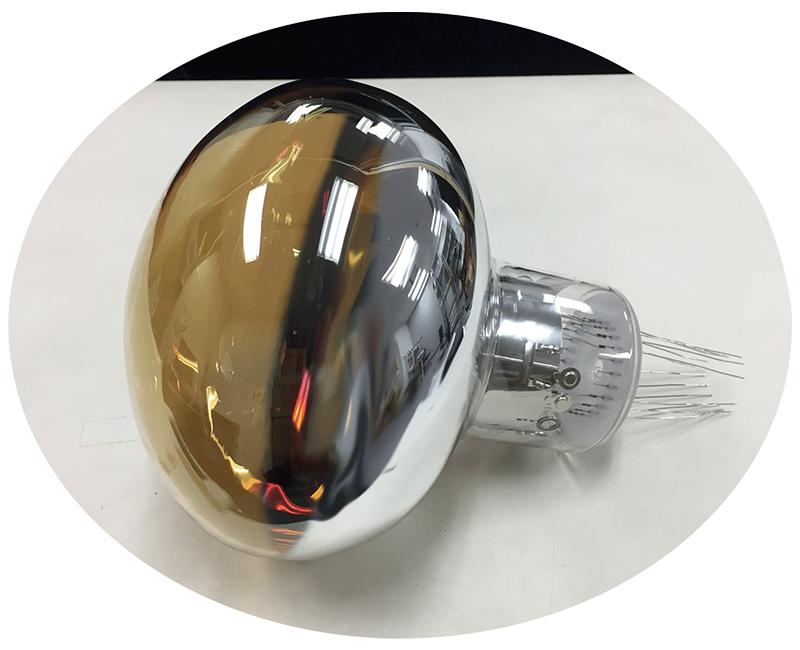
D-Egg houses a smaller version of the current DOM's PMT because the D-Egg casing is made to be slimmer than the DOM's. The DOM PMTs have a diameter of 25 cm, but the PMTs used for D-Egg detectors are around 20 cm in diameter.
In addition, while DOMs are installed with one downward-facing PMT, D-Eggs have two; one facing upward and one facing downward. This symmetric feature makes it more reliable to capture neutrinos coming from any direction.
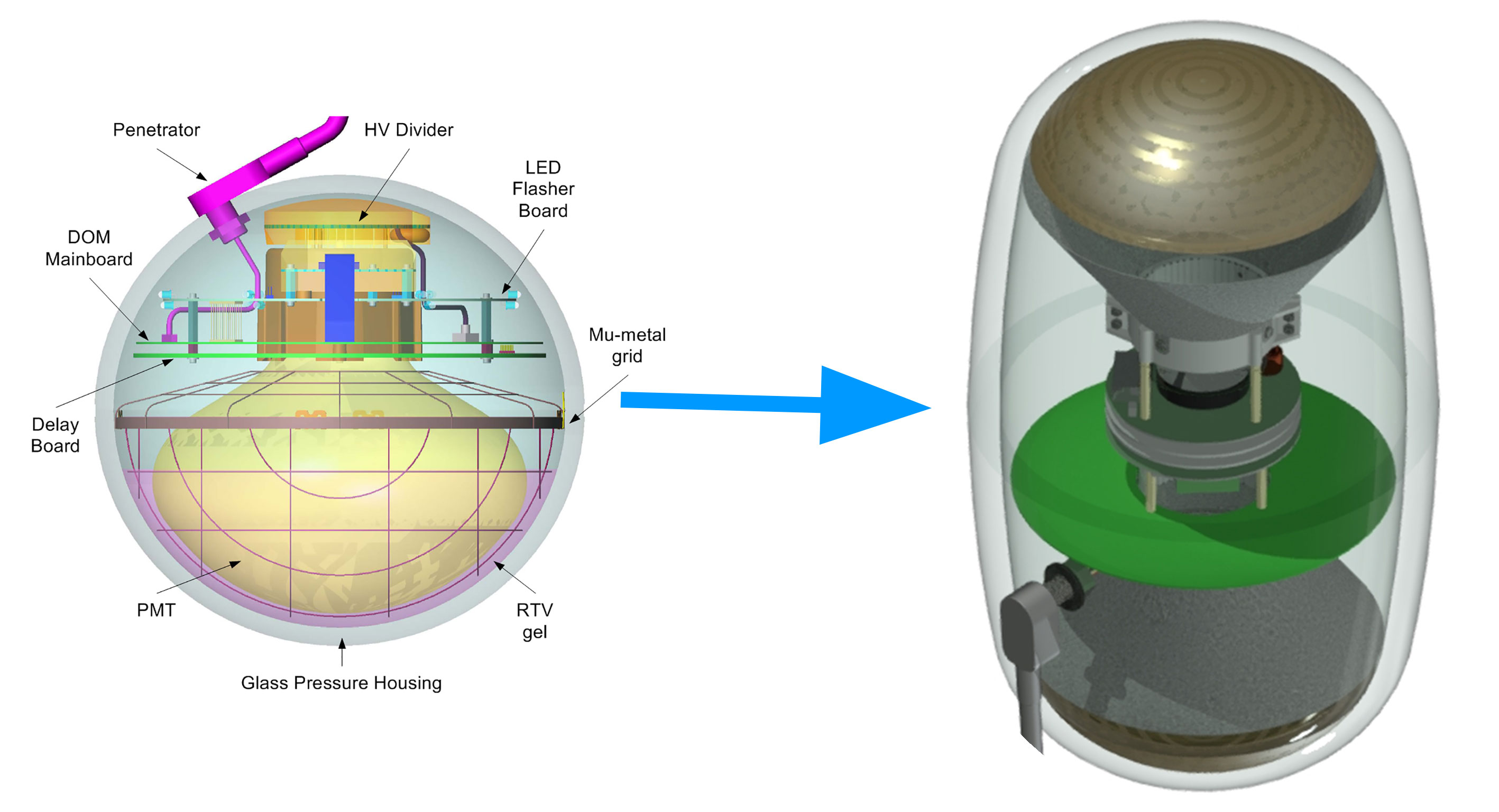
©IceCube Collaboration

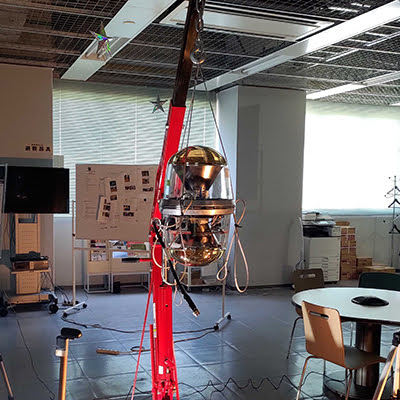
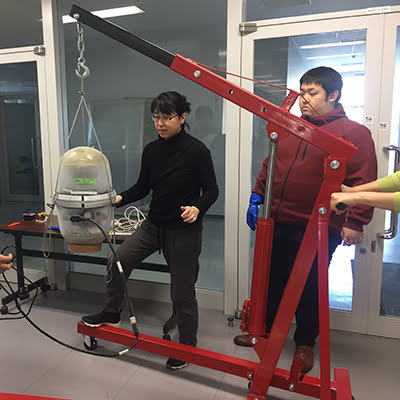
Around 300 D-Eggs are being manufactured since February 2020, ahead of the IceCube Upgrade construction scheduled in 2022. Most of D-Egg manufacturing and performance testing are performed by researchers and students from Chiba University by hand at the laboratory in the Nishi-Chiba campus.